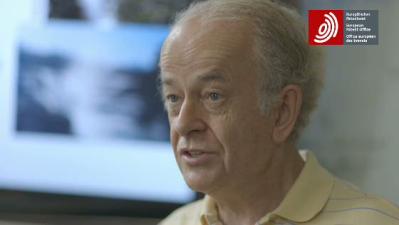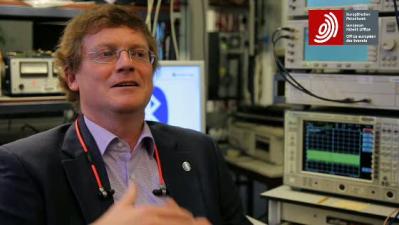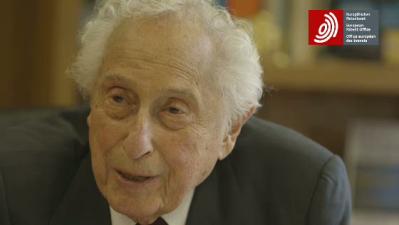John O' Sullivan, Graham Daniels, Terence Percival, Diethelm Ostry, John Deane
Wireless LAN for high speed data transfer
Winner of the European Inventor Award 2012 in the category Non-European countries
WLAN - enabling high-speed global connectivity
Radio astronomer Dr John O'Sullivan from Australia led a small but complementary team of scientists to develop the WLAN technology estimated to be used in over 3 billion mobile phones, laptops and other devices.
In the late 1970s Dr O’Sullivan was leading a research group working in radio astronomy. They developed equipment which could make sense of millions of radio signals echoing through the universe, and reassemble these reverberations into a meaningful picture of cosmic events in the distant past.
In 1983 Australia’s national science agency, CSIRO, asked Dr O’Sullivan to come up with practical applications for the technology, so his team began work on improving wireless LANs. The existing systems at the time could handle barely a few 100 Kb per second, but their target was to improve performance 1000-fold. Dr O’Sullivan assembled a truly inter-disciplinary team whose skills ranged from physics and mathematics to signal processing, control systems and network protocols. The team included Graham Daniels, Terry Percival, Diethelm Ostry and John Deane.
To transfer lots of data quickly without cables, it needs to be divided into small portions and transmitted on many different radio frequencies simultaneously, and then re-assembled in the right order by the receiver. When radio signals bounce off walls and floors, or when they interfere, they make the receiver’s job very much harder. The technology developed to screen out galactic noise in radio astronomy was just what was needed to help make sense of WLAN signals here on earth.
A provisional patent application was filed in Australia in 1992, followed by US, European and other filings in 1993, but early attempts to find a commercial partner failed. In 1997 a joint US-Australian firm – Radiata – was set up specifically to commercialise the technology and its related IP under licence from CSIRO. By 2000 Radiata were making their first chips, and in 2001 Radiata was bought by Cisco Systems for US$300 million.
In the late 1990s, the global standards body - the IEEE - incorporated CSIRO’s patent into an industry-wide standard for WLAN, and CSIRO agreed to offer licences to anyone on “fair, reasonable and non-discriminatory” terms so as to ensure interoperability between devices from all manufacturers.
With demand for wireless devices booming, what should have been an instant ticket to riches turned into a major patent battle. Despite the CSIRO technology being part of the global standard upon which dozens of manufacturers were now using in their own products, none of them were paying licensing fees. In 2005 CSIRO had no option but to take fourteen of the leading technology firms in the US to court, winning around AUD $200 million and getting about one third of the total industry to sign licensing deals. Since then a further AUD $250 million has been won in court from other infringers, and about 90% of the industry now pays for a CSIRO licence. Not having filed for patents in Russia, China or South America back in 1993 has prevented CSIRO from making any money from products made and distributed in those territories.
Dr O’Sullivan describes the wireless LAN “as a glorious example” of blue-sky research solving a problem with much wider application. The phenomenal growth in mobile technology, from phones to laptops to game-consoles, would not have been possible without the vision of this radio astronomer.
Contact
European Inventor Award and Young Inventors Prize queries:
european-inventor@epo.org Subscribe to the European Inventor Award newsletterMedia-related queries:
Contact our Press team#InventorAward #YoungInventors



